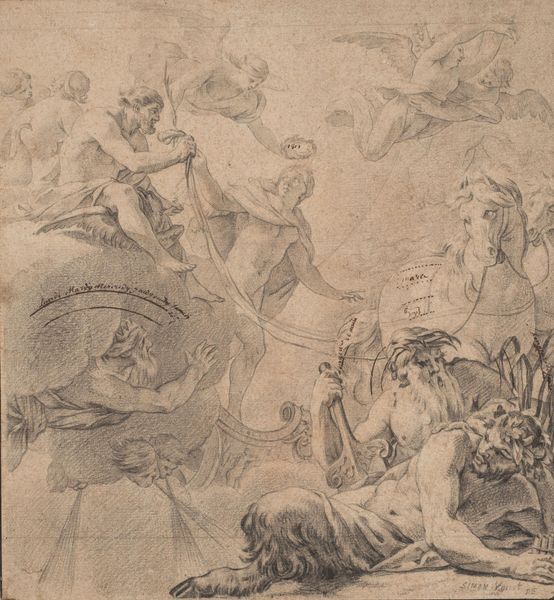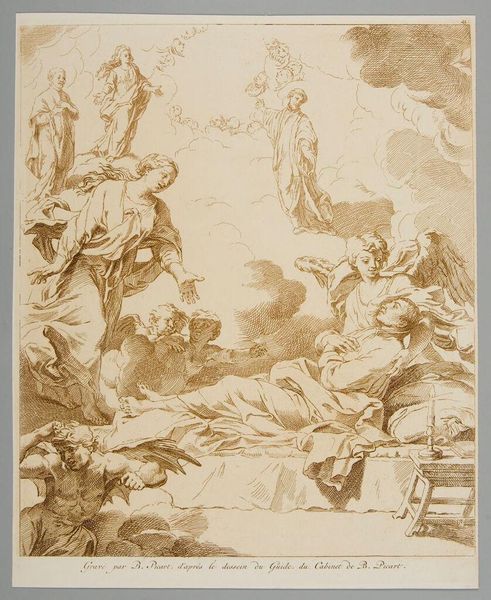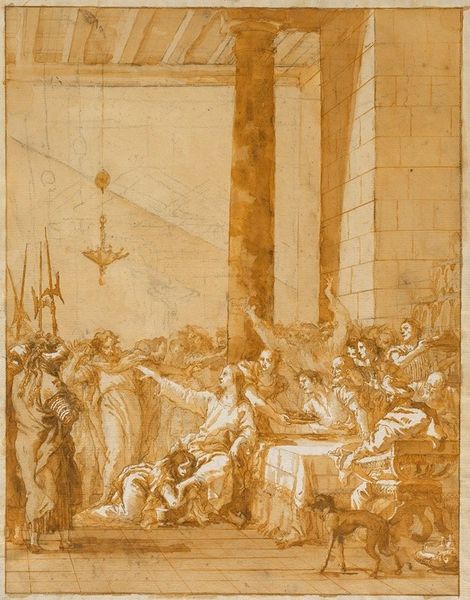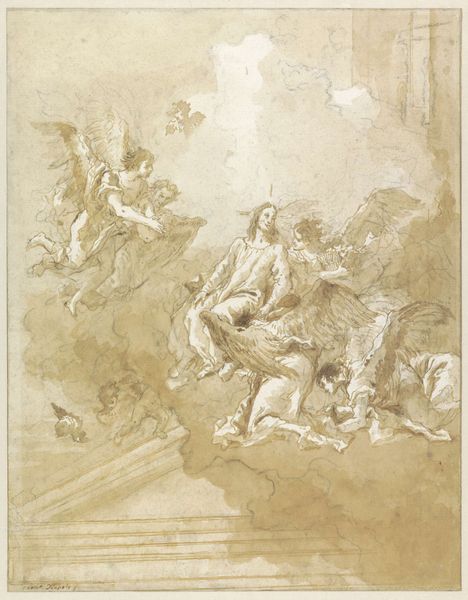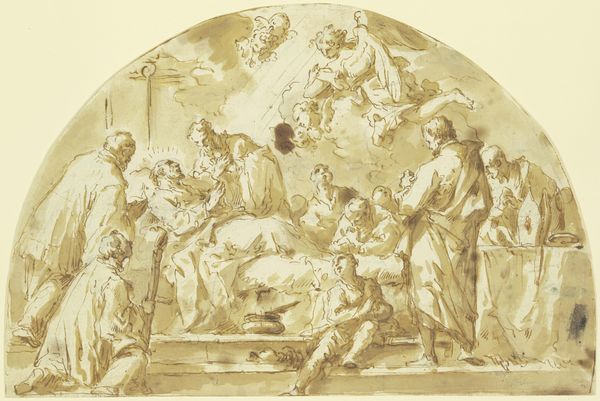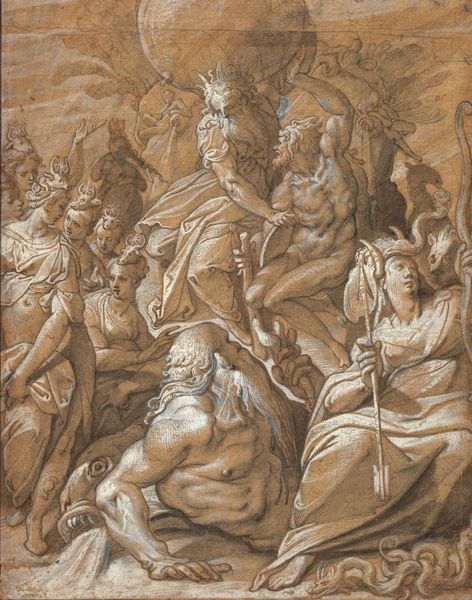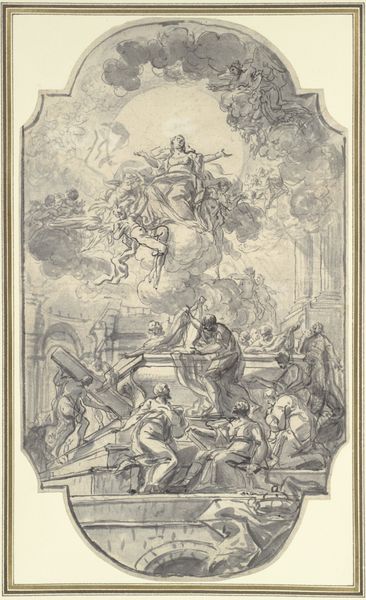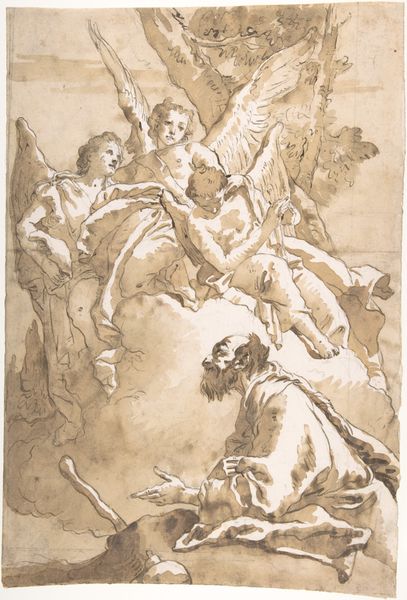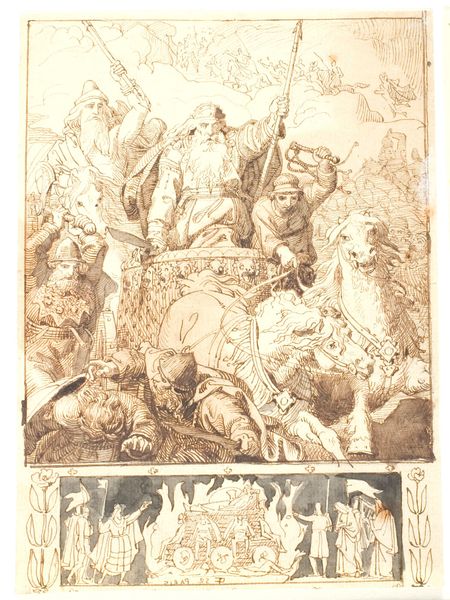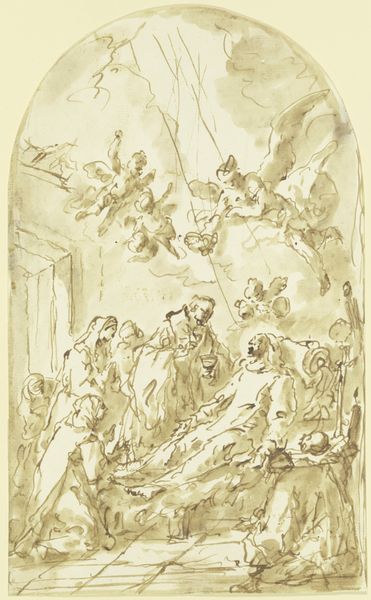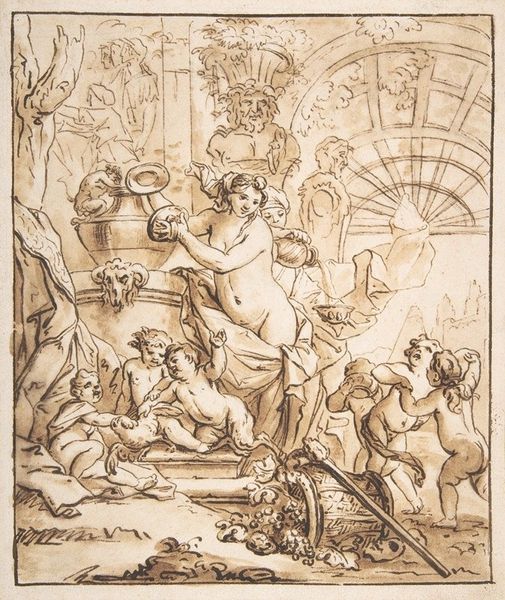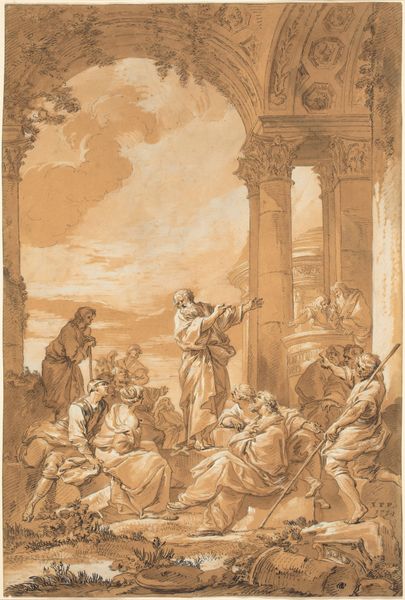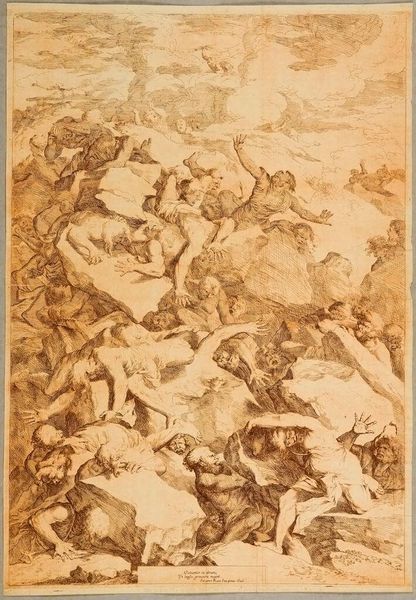
drawing
#
drawing
#
baroque
#
charcoal drawing
#
figuration
#
history-painting
Copyright: Public Domain: Artvee
Editor: We're looking at "L’Agonie du Christ à Gethsémani," a drawing by Giovanni Domenico Tiepolo. It’s a brown ink drawing and there's an almost dreamlike quality to it. The figures seem to float. What's your read on this piece? Curator: Well, beyond the religious iconography, it's crucial to examine Tiepolo’s materials and methods here. Consider the cheap availability of paper and ink at this time; this facilitated a burgeoning market of religious imagery, which democratized faith. How does the quick, loose line work, a technique readily achievable, speak to its intended audience? Editor: I see what you mean. The drawing doesn’t have the same painstaking detail as a painting, which would have taken a long time to create, costing both time and money. Curator: Precisely. Also consider, brown ink wasn't solely an aesthetic choice. Its accessibility to a broader range of practitioners is a telling indicator of Tiepolo's potential audience, a market driven more by devotion than aristocratic collecting habits. How does this knowledge shift your perspective? Editor: It reframes it, certainly. The drama becomes less about divine intervention and more about accessible devotion – about a certain population of people being able to bring artwork to their community more easily. Curator: Exactly. The mass-reproducible nature of prints after drawings, using readily available materials, made the narrative accessible, fostering a connection through process and medium, more than sheer spectacle. So, how do we re-evaluate the 'aura' of religious art when viewed through this lens of material reality? Editor: That’s really made me reconsider how I look at these Baroque drawings and their function at that point in time. So, it is all about the materiality of things when analyzing pieces like that! Curator: It is one valid aspect. By paying closer attention to what these artworks are made of, we can understand more about how art shapes culture and vice versa.
Comments
No comments
Be the first to comment and join the conversation on the ultimate creative platform.
